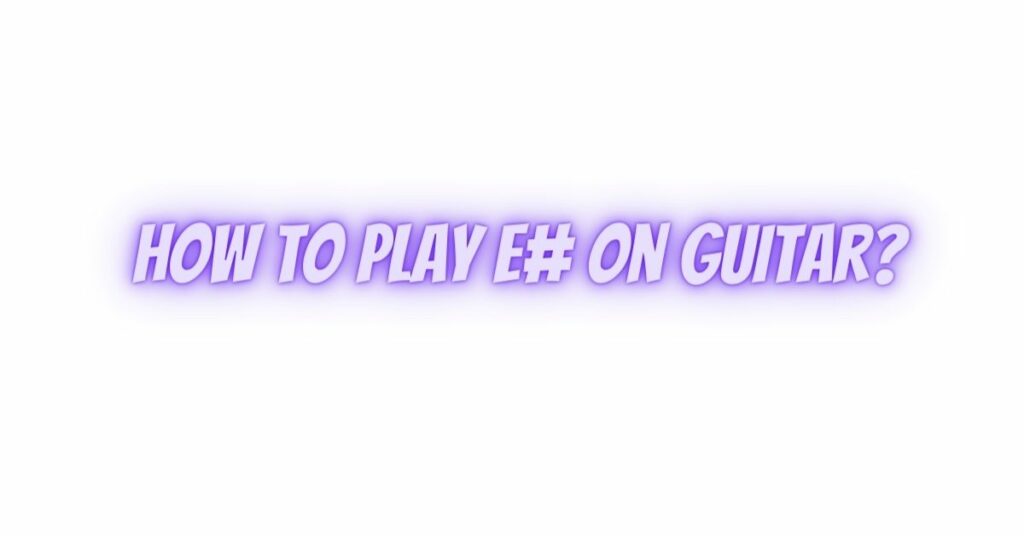E# is an enharmonic equivalent to F, meaning they share the same pitch but have different notations. While E# is not a commonly used notation in standard guitar music, understanding how to play it is valuable for enhancing your music theory knowledge and flexibility in various musical situations. In this comprehensive guide, we’ll explore how to play E# on the guitar, including chord voicings, scales, and practical techniques.
1. E# in Standard Tuning:
In standard tuning, the open strings of the guitar are typically tuned to E, A, D, G, B, and E. To play an E# in standard tuning, you’ll need to use the note F on the fretboard, as E# and F are enharmonically equivalent.
2. Playing an E# Chord:
E# as a chord is not a common or practical choice, given its enharmonic equivalence to F. However, you can incorporate the E# note within other chords to add color and variation to your playing. Here’s how to do it:
- E# in F Major Chord: To include E# within an F major chord, play an open F major chord (1st fret barred) and emphasize the 1st fret on the high E string. This adds the E# note to the chord.
3. E# in Scales:
E# can be integrated into various scales to create different musical moods. One prominent scale where E# is used is the F# major scale. Here’s how you can incorporate E# into the F# major scale on the guitar:
- F# Major Scale: The F# major scale consists of the notes F#, G#, A#, B, C#, D#, and E#. To include E# on the guitar, you can use it as the 7th note of the F# major scale. Play the F# major scale on the guitar and emphasize the 7th fret of the high E string to produce the E# note.
4. Alternate Tunings:
In alternate tunings, you may come across different ways to play E# on the guitar. Since alternate tunings can vary widely, it’s essential to understand how the specific tuning you’re using may affect the notation and location of E# on the fretboard.
5. Practical Techniques for E#:
To use the E# note effectively in your guitar playing, consider the following techniques:
- Bending: If you want to emphasize E# within a passage, you can use bending techniques on a nearby note, such as the D string at the 2nd fret (which is F), to bend the pitch up to E#. This technique adds expressiveness to your playing.
- Slide: Use slide guitar techniques to slide into the E# note from a nearby note, such as F. Slides can create smooth transitions between notes, making your playing more melodious.
6. Ear Training:
Developing your ear is essential to recognize E# (or F) when playing and improvising. Practice recognizing the sound and interval of E# within different musical contexts.
7. Practical Application:
While E# may not be a frequent note in standard guitar music, its theoretical understanding is valuable in music theory and composition. Understanding enharmonic equivalents like E# and F will broaden your musical knowledge and allow you to adapt to different musical situations.
Conclusion:
Understanding how to play E# on the guitar is an important aspect of music theory and fretboard navigation. While E# may not be used as a chord or note in common guitar music, recognizing it and its role in scales and chords can improve your musical versatility and creativity. Whether you choose to use E# in your playing or not, its theoretical significance in music theory remains undeniable.

